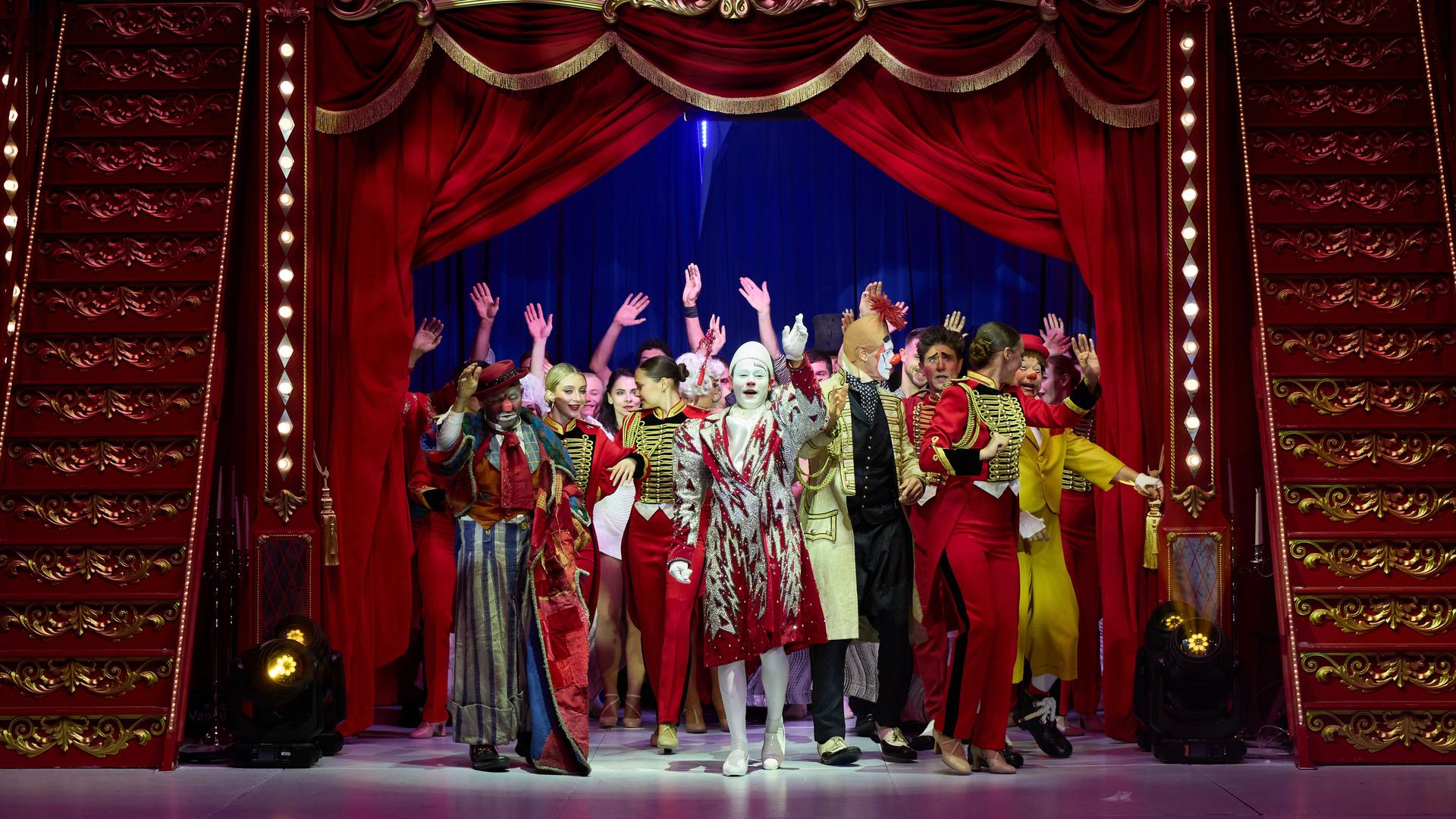Every year, New York’s Big Apple Circus pitches a tent in Lincoln Center and puts on a holiday show.
This year, it’s invited a famed German circus as its guests, and the show has a distinctly European flair.
The different aesthetic can be felt from the very beginning of the show. After a brief overture, which features a pair of clowns in a balloon high above the ring, the lights focus on another clown with his face painted white, playing the saxophone.
“Circus has to be clowns,” said Patrick Philadelphia, who directed the show, which is called “Journey to the Rainbow,” from Germany’s Circus-Theater Roncalli.
“We need a white clown with a saxophone in the beginning. This was always the opener in the beginning of Roncalli.”
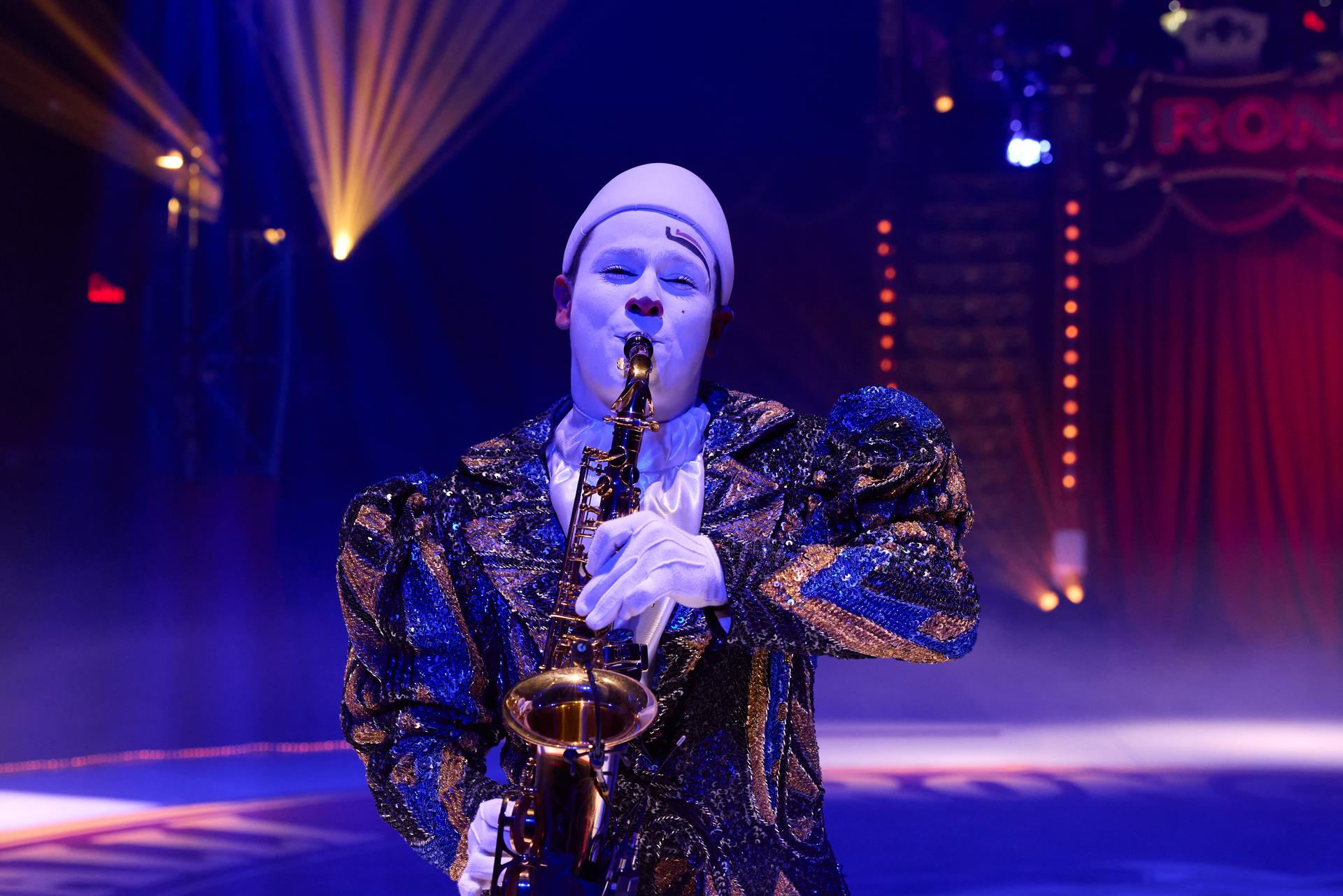
Circus-Theater Roncalli is one of the best circus makers in the world, said Marty LaSalle, a former acrobat with the Big Apple Circus, who is now its CEO.
“We’ve been following them for years, and we got in touch with them about collaborating on a show, and it was a very natural conversation,” LaSalle said.
While there are stylistic differences, he said the Big Apple Circus and Circus Theater Roncalli come from the same traditional Nouveau Cirque style.
Both companies were established in the mid-1970s as a reaction to the gargantuan Ringling Brothers/Barnum and Bailey three-ring circus. Both perform in intimate tents with a single ring.
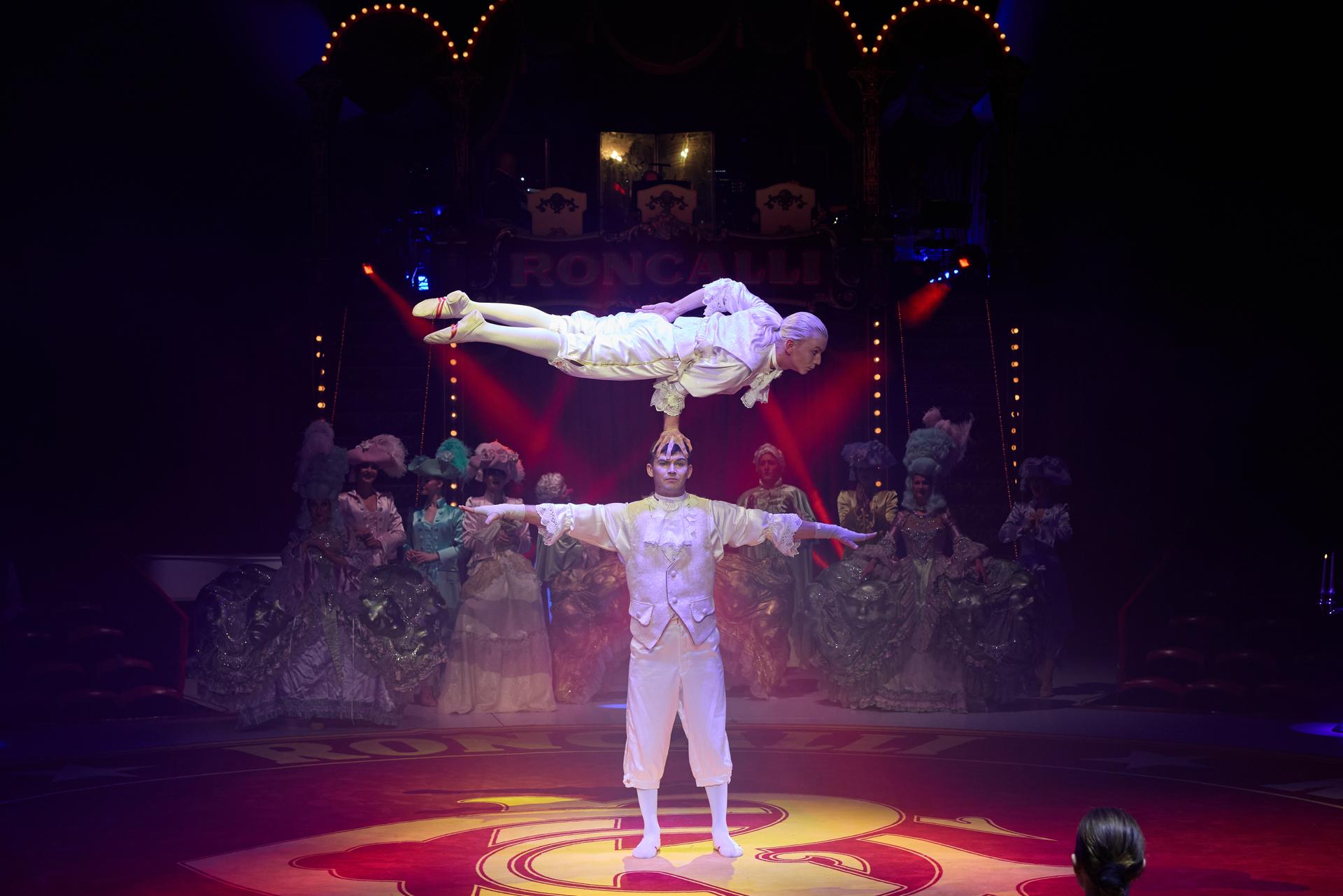
In the case of Roncalli, it was founded by Bernhard Paul, who was fed up with his job in advertising and wanted to follow his dream.
“When I was 6 years old, I saw a circus,” said Paul. “And these dreams never let me go. My dreams [were] always circus and clown.”
Paul not only created a successful circus empire in Germany — Roncalli currently has four shows running — but he starred as a clown named Zippo for many years.
“Journey to the Rainbow” doesn’t have a ringmaster, as traditional American circuses do; instead, it has five clowns.
One of them is Devlin Bogino.
“I’m like the seventh generation in my family doing circus,” said Bogino, who is French and Italian. He noted that Roncalli has a kind of ethereal aesthetic, poetry.
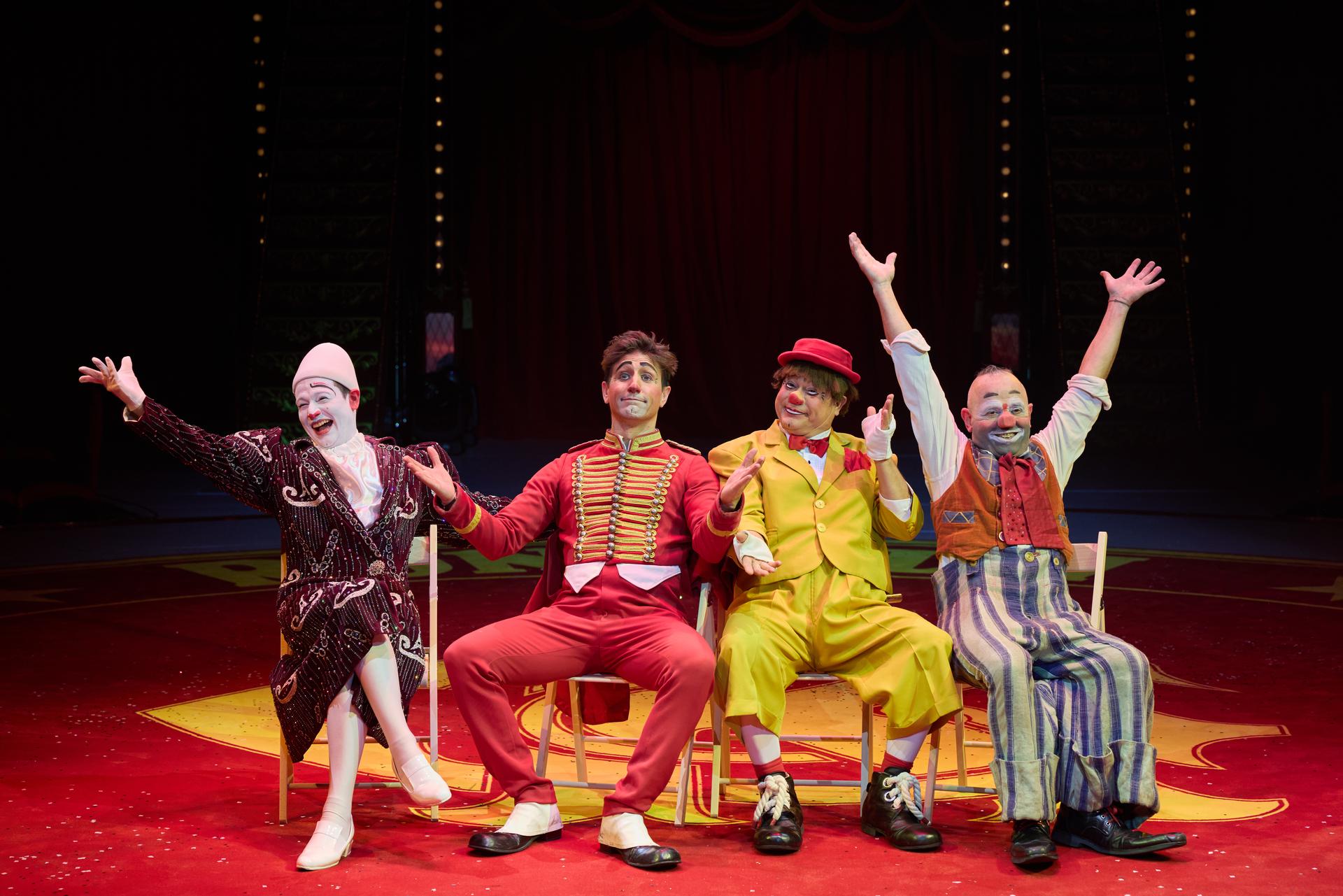
“The poetic part [is] what Roncalli always wants to bring in the show,” he explained. “It doesn’t matter which show they build; it can be in a theater, can be in a tent, can be for an event. We mix poetic [elements] and techniques.”
In addition to clowns between the various circus acts, there are dances, another Roncalli specialty.
Six long-legged dancers resemble Rockettes and do almost a dozen routines in different costumes.
Founder Bernhard Paul said the company brought eight containers of costumes and scenery to the Big Apple.
The dancers were cast in New York, but the circus performers come from 14 countries, from Mexico to Hungary, from Spain to, of course, Germany.
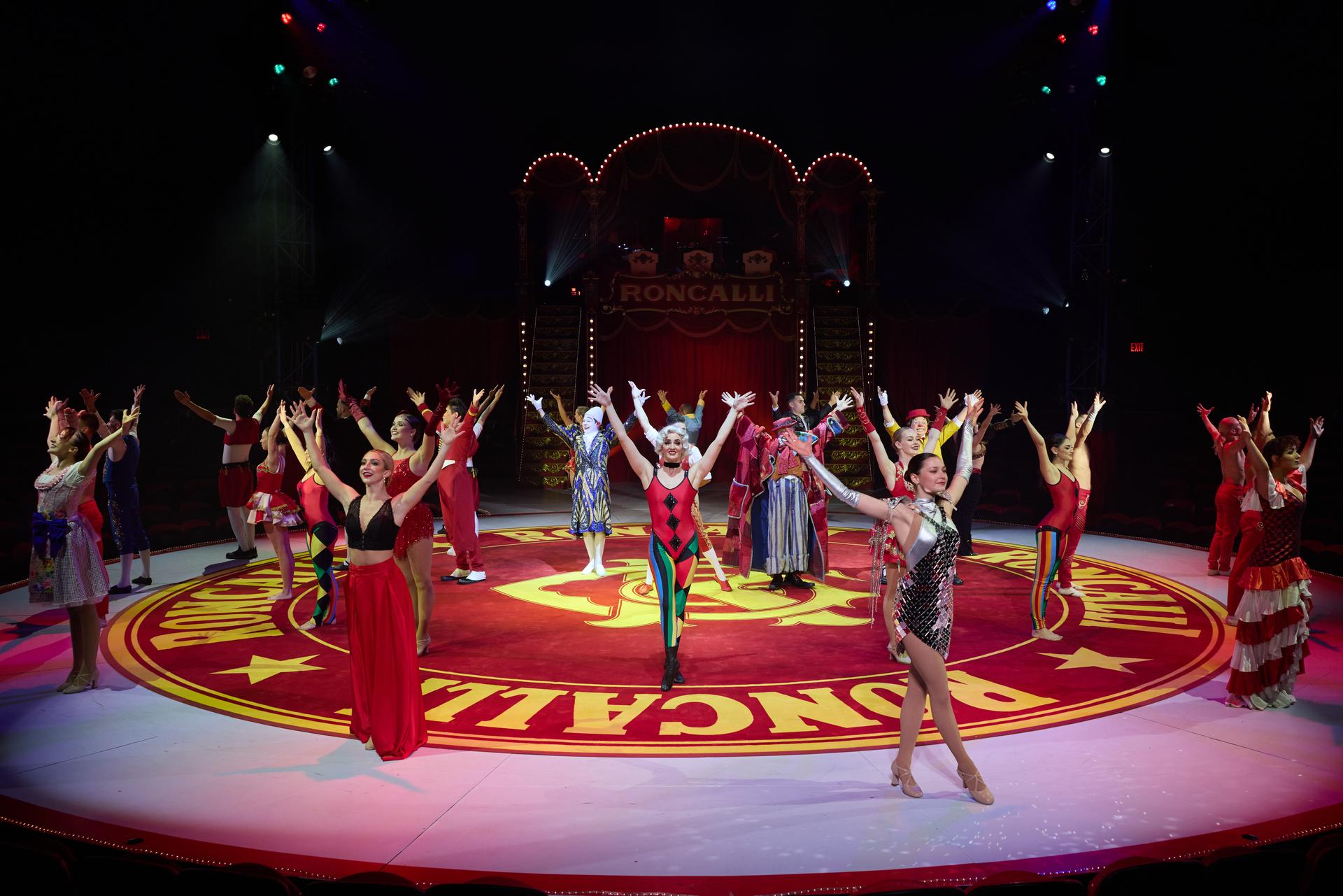
Paul said he looks for performers with a wow factor. “It’s always good when you see something and say, ‘This is incredible. I cannot do it!’”
That would certainly describe Emma Philips’ act.
The New Zealand native does a mind-boggling juggling routine for which she studied abroad.
“I ended up in China for three and a half years in a very small village with no English, no foreigners, no connection to the outside world. And I put in my 10,000 hours,” she said.
Philips said she does traditional Chinese art that she’s put a personal spin on.
“I juggle with my feet,” she said. “And I juggle large Chinese parasols, which are very light. Then I also juggle a wooden table that is very much real despite what people think.”
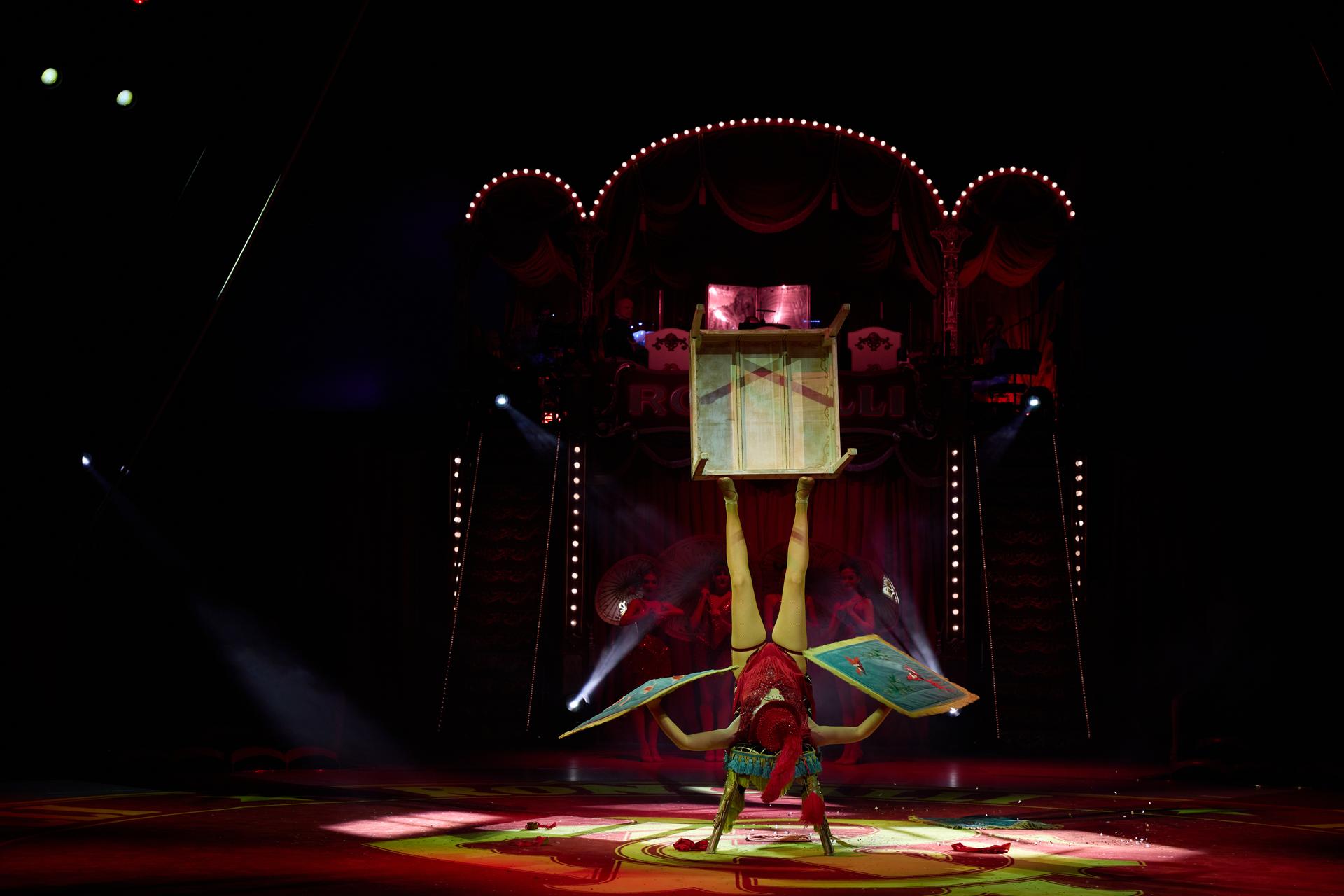
If Emma Philips’ act is on the ground, Iryna Galenchyk from Ukraine flies through the air.
She and her husband do an aerial act with straps that is both gasp-inducing and romantic.
And there’s no net.
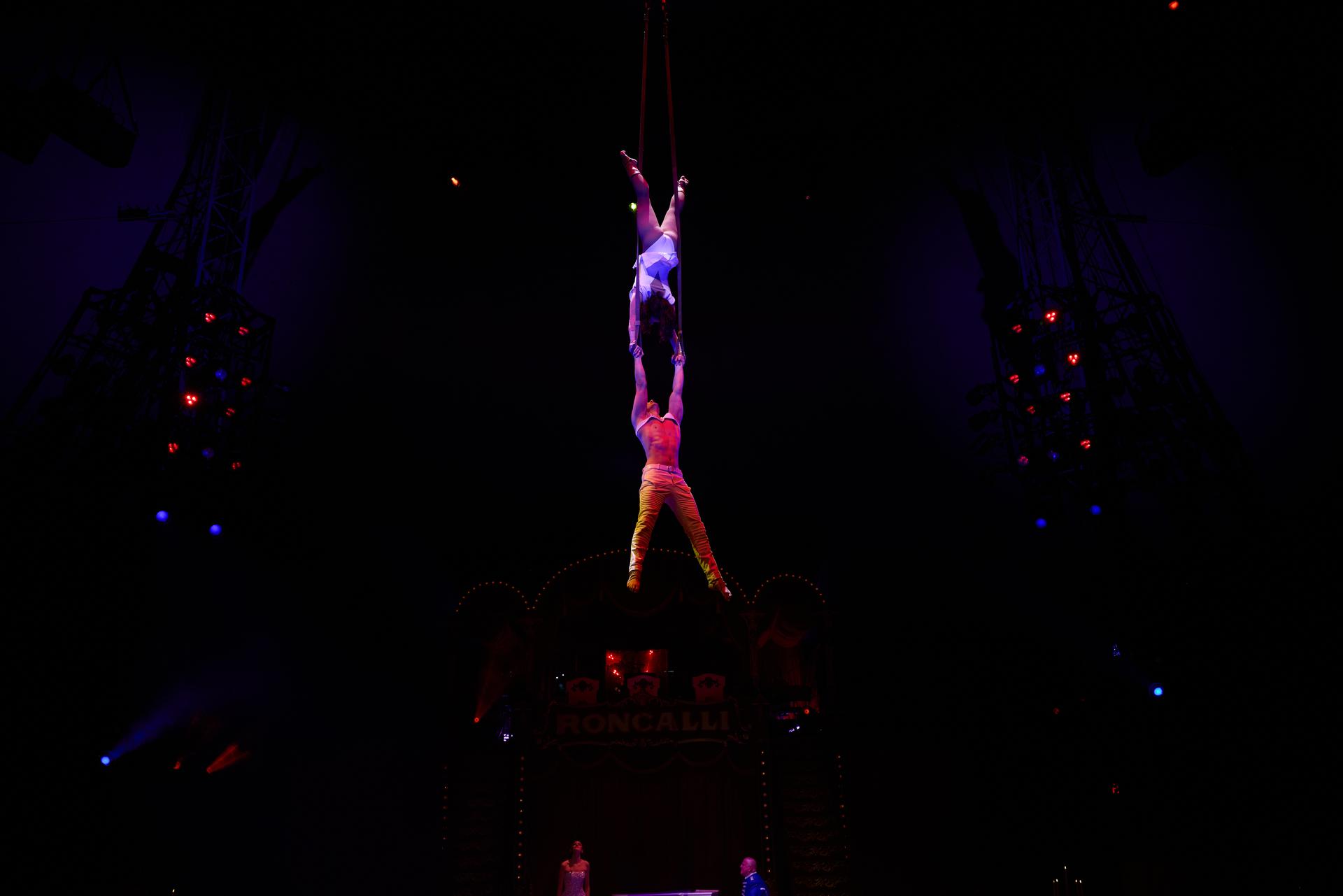
“I trust him so much,” she said. “So, I’m not scared that something can happen because of him. I think you can see how we act because we love each other and then we trust [each other]. That’s why maybe you can see there is no fear between us.”
Her routine ends the first act, but the final routine in the show isn’t a traditional flying trapeze act or high wire act; it features a clown who blows bubbles, and it’s pure poetry.
“I think the last impression is really important,” he explained. “And it’s a different feeling, [seeing] bubbles, and you have a place for your dreams, ideas and fantasy. And it’s very peaceful. So, I think it’s very important how you send the audience out into the world.”
